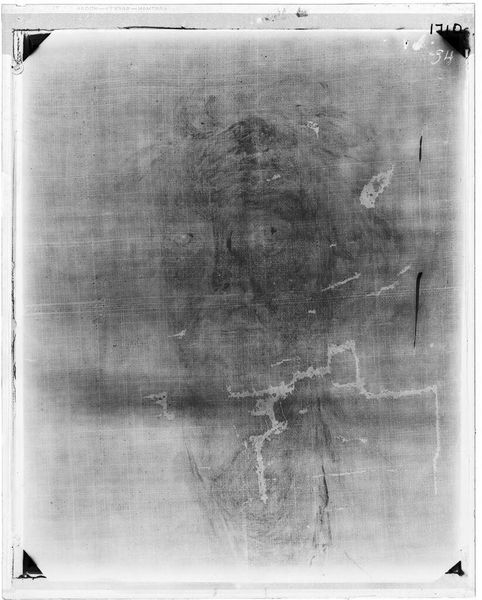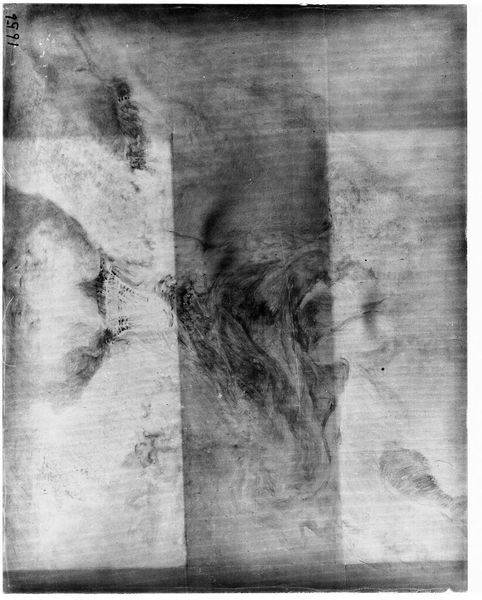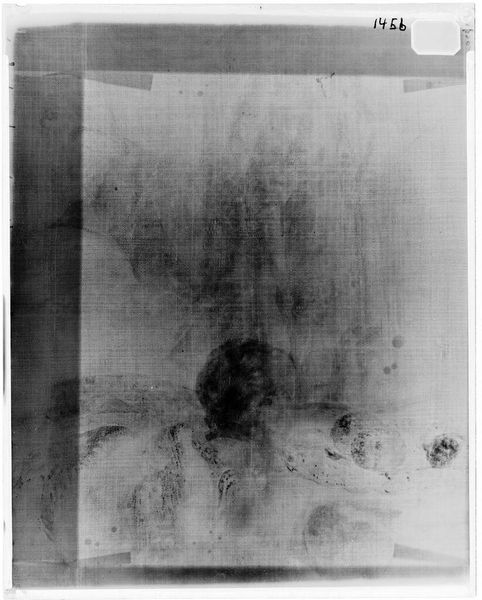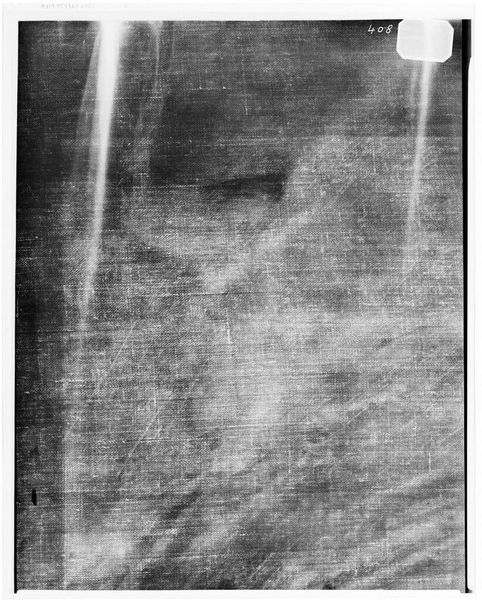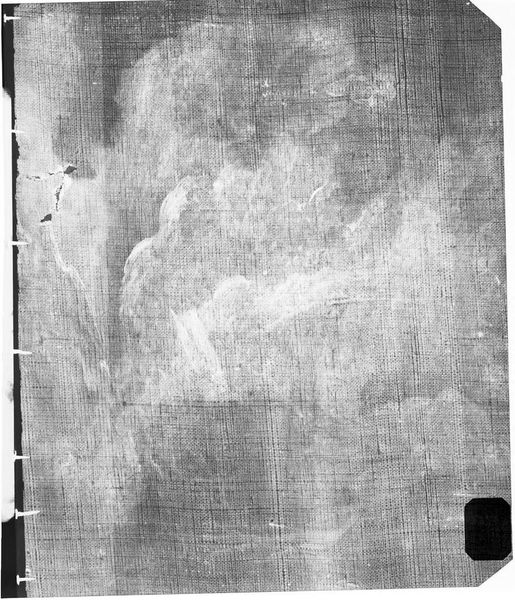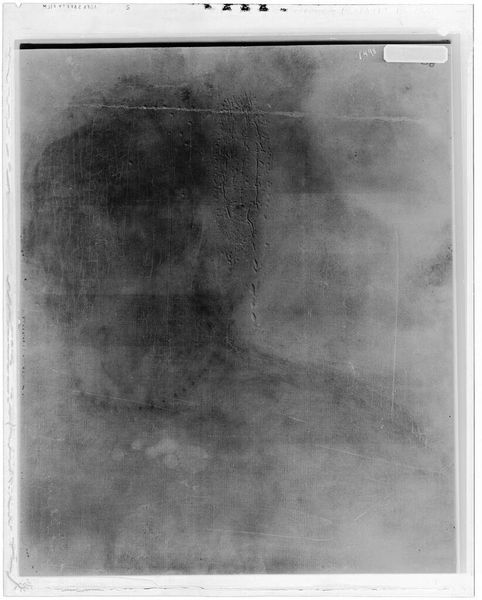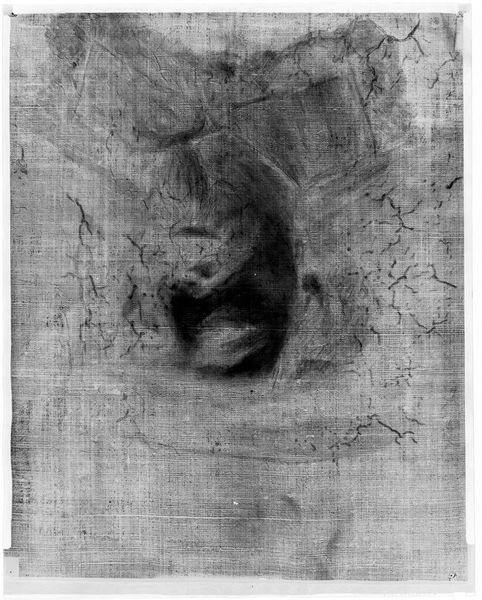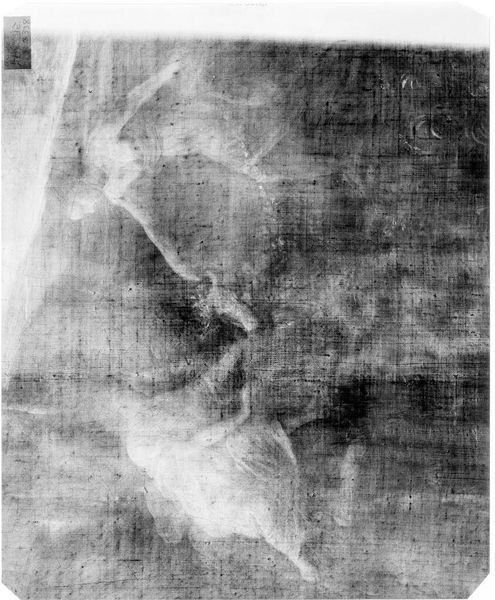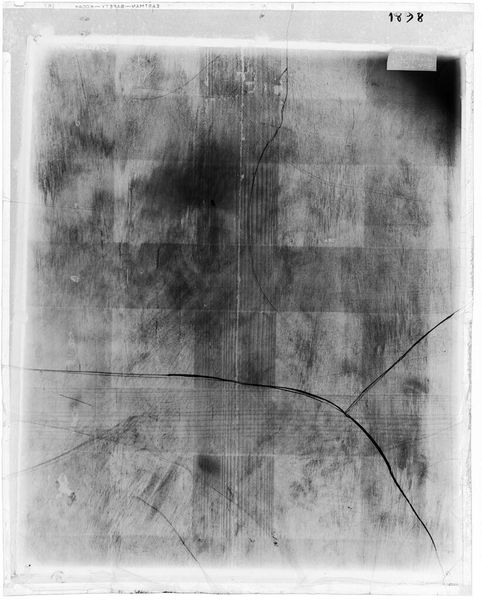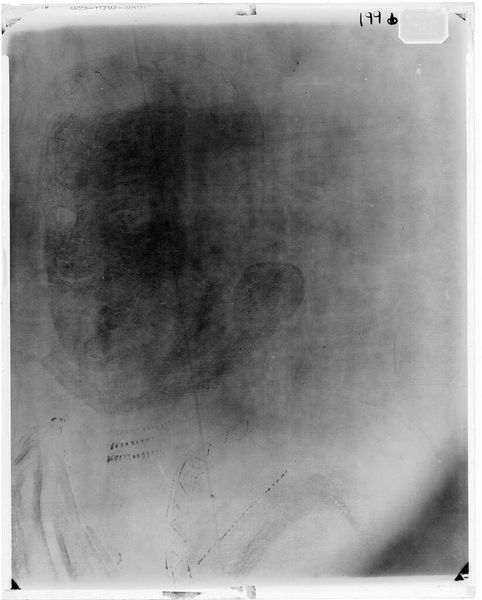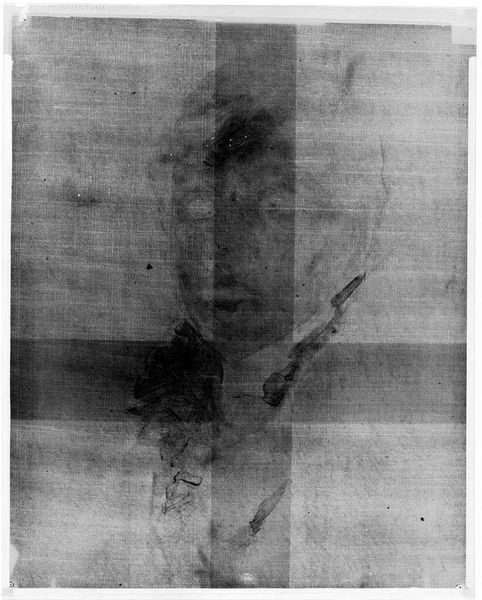
Copyright: CC0 1.0
Curator: This is an X-radiograph of "Philosopher" after Jusepe de Ribera, currently held in the Harvard Art Museums. The original artwork's creation date is unknown. Editor: There's an ethereal, almost ghostly quality to this X-ray. You can make out the vague shape of a head and shoulders, but it's like peering into a memory. Curator: Absolutely. This X-radiograph allows us to see beneath the surface, revealing the artist's process and any underlying layers of paint. It's a fascinating look at the evolution of an image. Editor: It's interesting how the scientific process of radiography transforms a representational work into something more abstract. Does that distort or enhance the cultural significance of the original piece? Curator: That's a complicated question. The X-ray strips away the colour and texture that would have been crucial to Ribera's original intent, but adds a layer of interpretive potential. Editor: I agree. It's a new symbol, the artwork reborn through technology. I find it fascinating how each layer of interpretation changes how we connect to the original image. Curator: Indeed. It's like a visual echo, reminding us that art is always in dialogue with its history and its present.
Comments
No comments
Be the first to comment and join the conversation on the ultimate creative platform.
